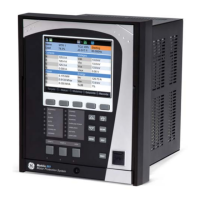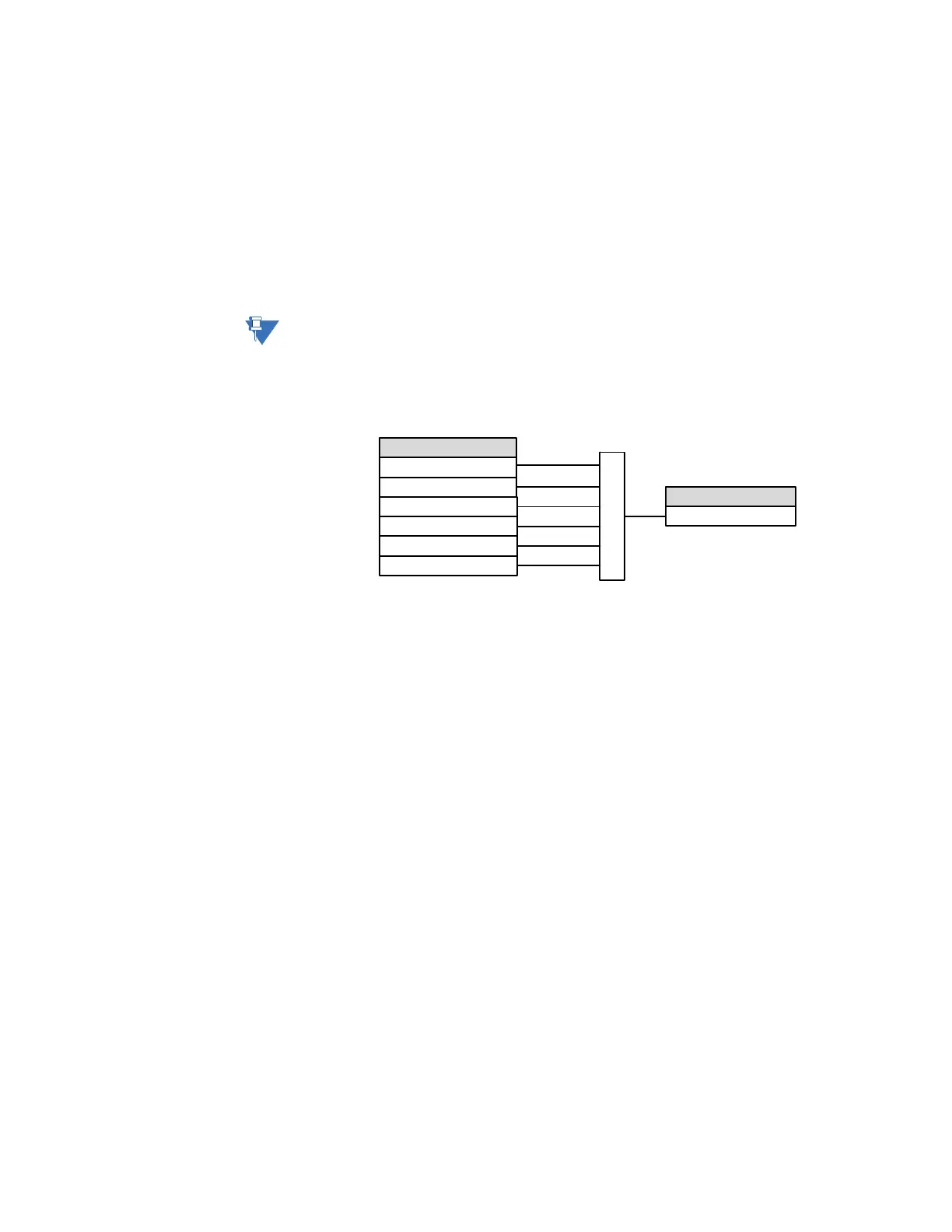CHAPTER 4: SETPOINTS CONTROL
869 MOTOR PROTECTION SYSTEM – INSTRUCTION MANUAL 4–323
Start Supervision
Start Supervision consists of four elements that guard against excessive starting duty. All
Start Supervision elements operate the FlexLogic operand Output Relay 3 (“Start Inhibit”).
In addition to Start Supervision elements, the Start Inhibit operand relay also operates
when the Phase Reversal element or Any Trip operates, as shown in the following figure:
Start Inhibit FlexLogic operand. If the condition that has caused the trip is still present (e.g.
hot RTD), the Start Inhibit operand relay will not reset until the condition is no longer
present or the lockout time has expired. Auxiliary Output Relay, energized by the Start
Inhibit operand, changes state only when the motor is stopped to accommodate control
circuits that must be continuously energized, such as a contactor.
NOTE:
The Start Inhibit operand is programmed as factory default to energize the auxiliary
Output Relay 3, therefore, it is recommended to use the auxiliary Output Relay 3 to inhibit
the closing of the motor switching device, as illustrated by the figure: Typical Wiring
Diagram in chapter 2.
Figure 4-128: Start Inhibit FlexLogic operand
The four elements of Start Supervision are: Thermal Start Inhibit, Maximum Starting Rate,
Time Between Starts, and Restart Delay.
Thermal Inhibit
This function is provided to inhibit starting of a motor if there is insufficient thermal
capacity (TC) available for a successful start. The thermal capcity required for a successful
start or the learned thermal capacity used at start (TC
L
) is calculated even if the Thermal
Start Inhibit element is disabled.
The information about learned thermal capacity is stored in a non-volatile memory and it is
a
vailable after the power is removed from the 869 . The TC
L
is the largest thermal capacity
used value from a number (N) of most recent successful starts. “N” is set in
Setpoints >
System > Motor > Setup > Number of Starts to Learn
. A successful motor start is one in
which the motor reaches the Running state. See the Motor Status section of this manual
for a description of Running state logic. When the start history is not available or “Clear
Learned TCU” command (in Records > Clear Records) is executed, a value of 85% is used
for the learned thermal capacity used until displaced by the largest of the “N” subsequent
successful starts. This 85% default requires the thermal capacity used to decay to the 15%
level before the start is allowed.
Starts are inhibited while the thermal capacity is greater than the adjusted thermal
cap
acity (TC
ADJ
) subtracted from 100%. TC
ADJ
is equal to the learned thermal capacity
used at start (learned start TCU or TC
L
) increased by the margin (TC Used Margin). The
formula is TC
ADJ
= TC
L
+ (TC Used Margin / 100%) x TC
L
.
For example, if the thermal capacity used for
the last 5 starts is 24, 23, 27, 26 and 20%
respectively, the learned starting capacity used at start is the Maximum of (24%, 23%,
27%, 26%, 20%) = 27%. If the set margin is 25%, the adjusted thermal capacity learned
value (TC
ADJ
) is calculated as 27% x (1+25%/100%) = 33.75%. A start inhibit is issued until
the motor current TCU decays to 100% - 33.75 = 66.25%. For more details, please see the
Thermal Start Inhibit logic diagram.
FlexLogic Operand
Start Inhibit
FlexLogic Operands
Thermal Inhibit OP
OR
Max Start Rate OP
Time Btwn Start OP
Restart Delay OP
Phase Rev Inhibit
Any Trip

